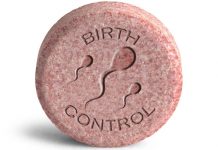Year after year, the number of babies prone to allergies and respiratory illnesses is increasing. Parents who have heard the diagnosis “allergy” or “asthma” in the first place should provide a child hypoallergenic environment and should start with a child’s bedroom.
A child can become allergic or suffer from respiratory illnesses for a dozen different reasons: hereditary predisposition, artificial feeding, malfunctions during pregnancy (bad ecology, stress, poor diet, taking medications, smoking, etc.). Parents whose children have been diagnosed by a doctor with a tendency to allergies or the onset of respiratory disease should not be alarmed. Observing certain rules, you will be able to provide your child with a full life, because science and medicine do not stand still, new treatments are created, devices and products are developed to make life easier for people with allergies.
 The first thing parents of a child with allergies should start with after going to the doctor is to create a hypoallergenic environment, especially in a child’s bedroom.Buy a EcoQuest air purifier and if necessary a humidifier/dryer, hypoallergenic household chemicals and cosmetics, preferably install plastic windows, clean regularly with a hypoallergenic vacuum cleaner and anti-allergenic products.
The first thing parents of a child with allergies should start with after going to the doctor is to create a hypoallergenic environment, especially in a child’s bedroom.Buy a EcoQuest air purifier and if necessary a humidifier/dryer, hypoallergenic household chemicals and cosmetics, preferably install plastic windows, clean regularly with a hypoallergenic vacuum cleaner and anti-allergenic products.
Particular attention should be paid to children’s beds and their bedding. Do not use pillows and blankets made from organic fillers (down, feather, wool, bamboo, foam, latex, silk, buckwheat husk and others), because they can cause allergic reactions in the child and provoke a deterioration. It is recommended to choose bedding with a synthetic filler without an adhesive base (for example polyester fiber filler) – they really do not cause a reaction.Be sure to study the hygienic properties of the selected synthetic filler – pillows and blankets should have unobstructed passage of moisture and air. This will reduce the sweating of a sleeping baby, provide comfort (with breathable bedding, the child will be warm, but not hot). Good hygienic qualities of products prevent the growth of bacteria, mold and microorganisms in them, which can cause allergic reactions.
Make sure that children’s bedding can be washed regularly at a temperature of at least 60°. A myriad of household allergens accumulate in bedding: plant pollen, dust mite products, pet hair and dander, mold spores, chemical particles, tiny bits of fabric and paper, and more. A monthly wash at 60° will help to properly remove all household allergens from bedding and kill the dust mites that live in it.
Fortunately, modern manufacturers have developed many models of hypoallergenic bedding made of synthetic fillings, which will allow you to choose safe products for your baby, without forgetting about comfort.
An infant under two years of age should not use a pillow at all, preschool children should buy a pillow of medium hardness, the maximum height of three centimeters, the width of the pillow should not be wider than the mattress. For schoolchildren and teenagers, the pillow should be chosen according to the preferred sleeping position:
- For sleeping on the side, a rigid pillow equal in height to the width of the child’s shoulder is suitable.
- For sleeping on the stomach, the thinnest and softest pillow is suitable.
- To sleep on your back, you need a pillow of medium height and firmness.
An orthopedic pillow until the end of the growth of the spine, you can buy only if recommended by your doctor.A blanket for a child should be the right size – to cover the child securely in all positions, but without being too bulky.A breathable blanket will keep your baby warm, but not hot.





































